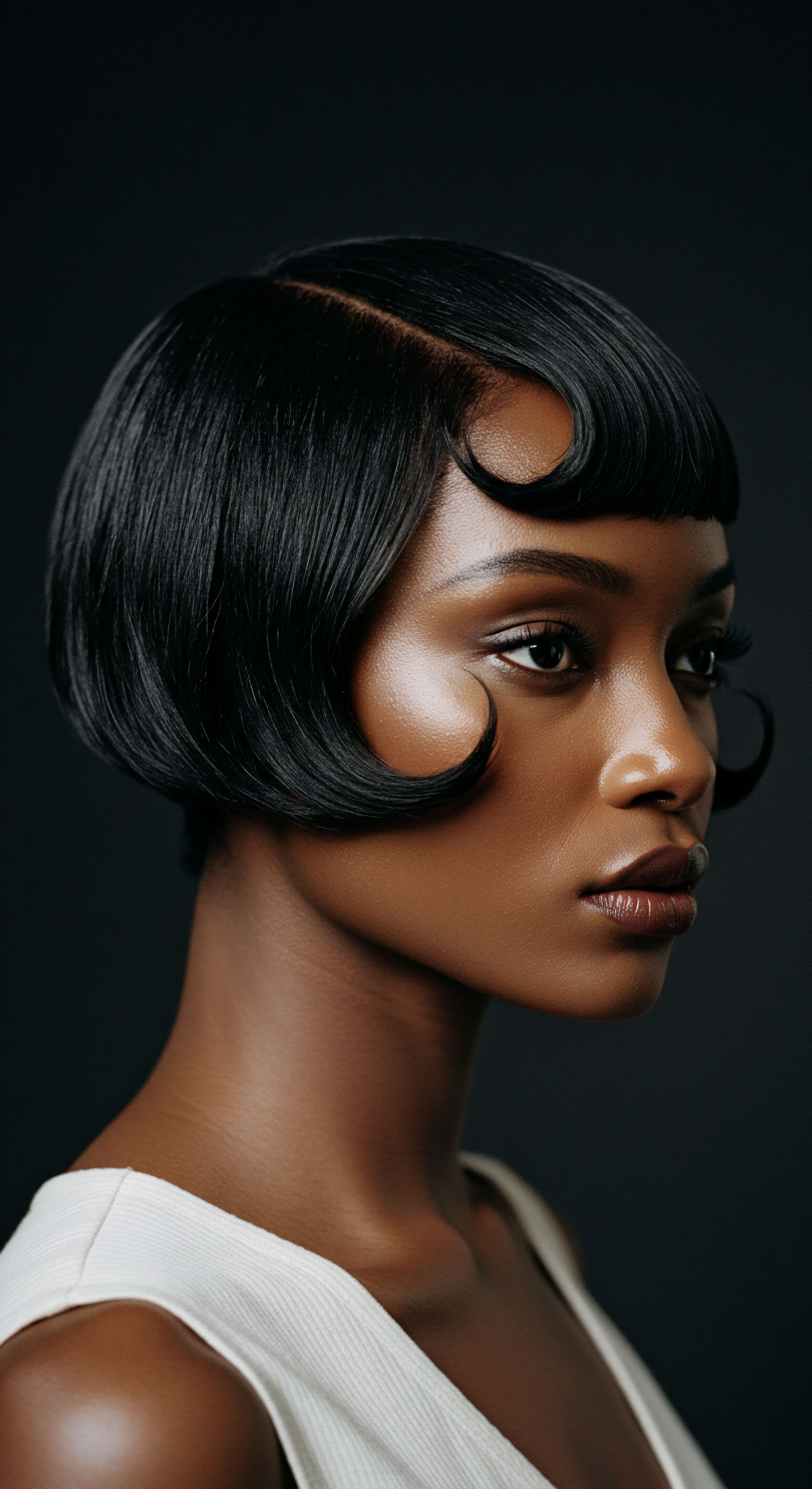
Roots
Beneath the visible canopy of coils, waves, and textured strands, lies a world of microscopic wonder, a foundational structure often overlooked yet holding the very key to our hair’s vitality. Have you ever paused to consider the quiet work happening at the surface of each strand, a work that dictates its resilience, its sheen, its very ability to hold moisture? This unseen layer, the hair cuticle, serves as a guardian, a silent architect of health and beauty. It is a concept we instinctively feel when our hair responds to a gentle touch or shies away from harsh elements, a recognition of its delicate balance.
At Roothea, we begin our exploration at this elemental point, recognizing that a true appreciation for textured hair springs from a grounded comprehension of its fundamental components. The cuticle, often described as overlapping scales, forms the outermost defense of each hair shaft. These scales, comprised of layers of keratin protein, are not merely decorative; they are the first line of protection, shielding the more delicate inner structures from the world’s many challenges. Think of them as the finely laid shingles on a cherished roof, each one contributing to the integrity of the whole, ensuring the dwelling remains safe and sound.
The hair cuticle, a layer of overlapping scales, stands as the hair shaft’s primary shield, protecting its inner vitality.
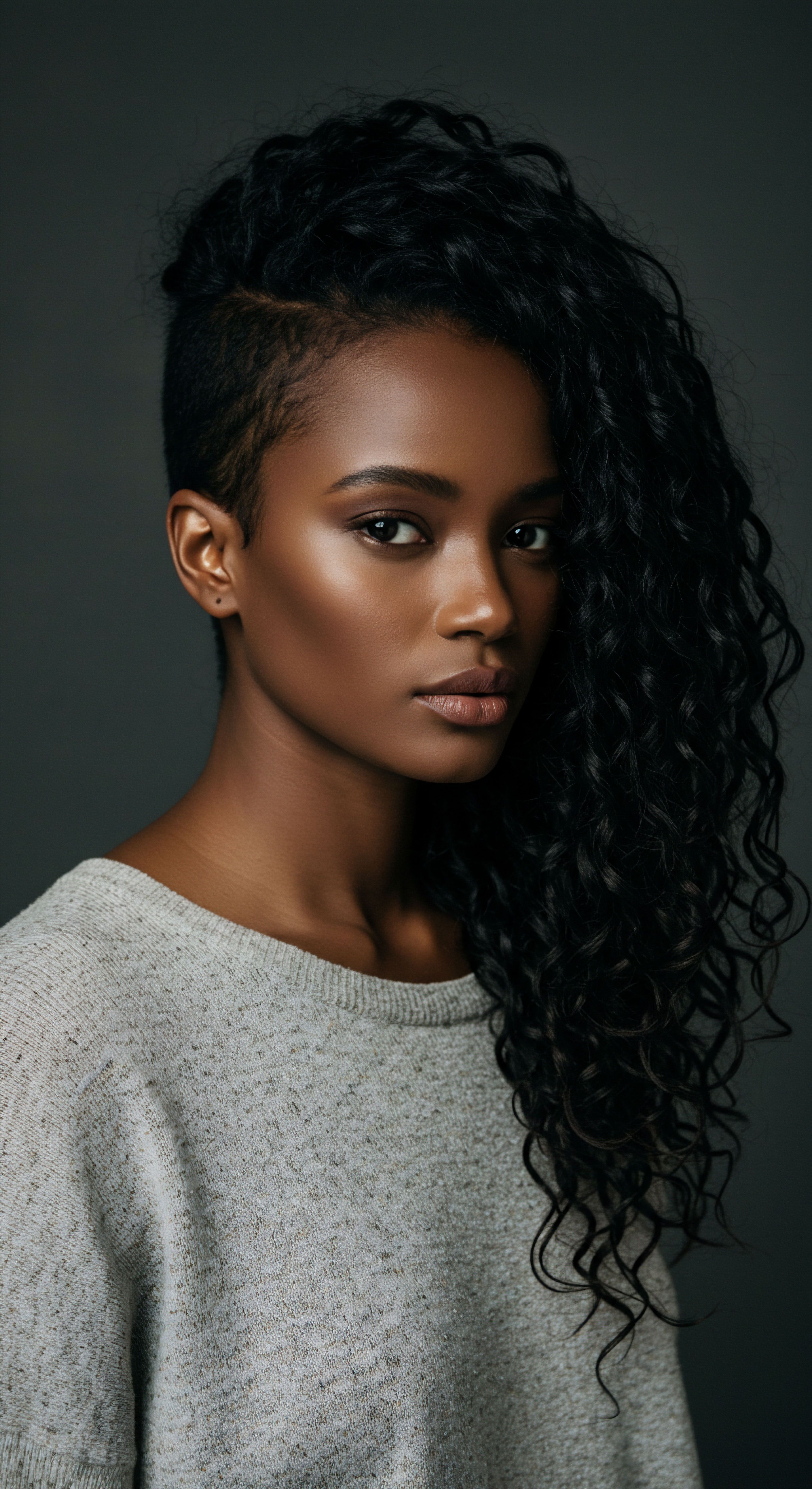
Hair’s Protective Outer Layer
The hair shaft itself consists of three main parts ❉ the medulla, the cortex, and the cuticle. The Medulla, the innermost layer, typically appears only in thicker hair types, often as a loosely packed, disordered region. Surrounding it is the Cortex, which accounts for the majority of the hair’s mass. This central part contains the fibrous proteins and the melanin responsible for hair color, strength, and elasticity.
Encasing both these inner layers is the cuticle, a transparent, multi-layered shield. In human hair, this shield can consist of 8-10 layers of flattened, translucent cells.
The arrangement of these cuticle cells is quite specific, pointing away from the scalp towards the hair tip, much like roof tiles. This directional alignment plays a role in how hair interacts with its surroundings. When these scales lie flat and smooth, they create a uniform surface that reflects light, bestowing hair with its natural sheen and soft feel.
Conversely, when the cuticle scales are lifted or damaged, the surface becomes rough, scattering light and leading to a duller appearance. This condition often results in a less pleasant tactile experience.

Microscopic Architecture of the Cuticle
A closer look at the cuticle reveals a sophisticated cellular arrangement. Each cuticle cell, roughly 0.5 micrometers thick and 45-60 micrometers long, overlaps its neighbor, creating a robust, protective shell. These cells are not simply stacked; they are held together by a complex network of proteins and lipids, known as the Cell Membrane Complex (CMC). This intercellular cement, particularly rich in lipids like ceramides, cholesterol, and fatty acids, plays a significant part in binding the cells and maintaining the cuticle’s integrity.
One particularly interesting lipid found in the cuticle is 18-Methyleicosanoic Acid (18-MEA). This fatty acid is linked by thioester bonds and contributes significantly to the hydrophobic properties of hair, meaning its ability to repel water. A study by Rogers and Koike (unpublished data, cited in) explored proteins with 18-MEA and other fatty acids attached by thioester bonds, conducting experiments on hair fibers before keratinization to better understand these connections.
This highlights the ongoing scientific pursuit to unravel the precise chemical bonds that fortify the cuticle’s structure. The presence of 18-MEA on the outermost surface helps to maintain the hair’s natural barrier against moisture loss and environmental stressors.
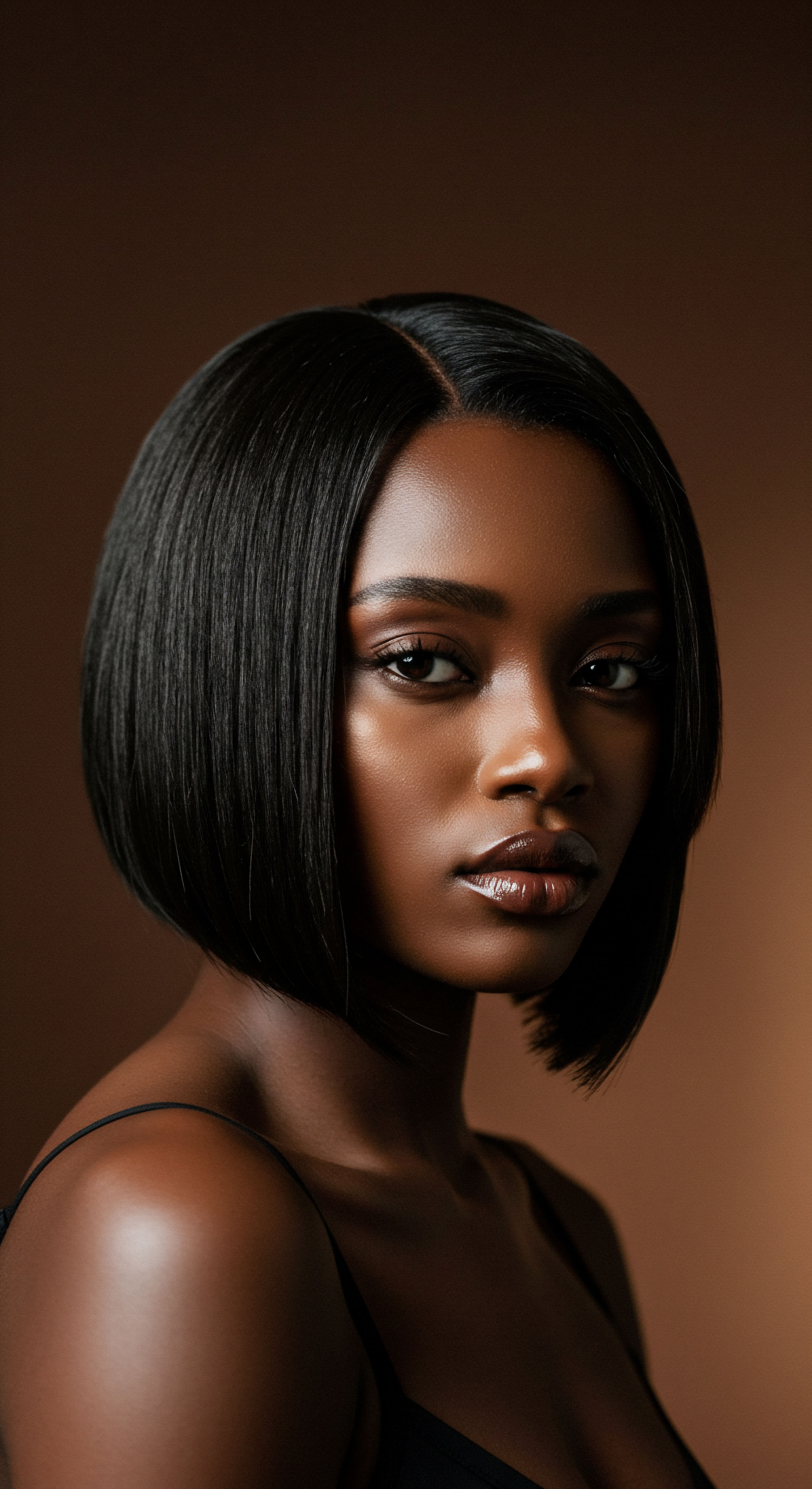
What Makes a Healthy Cuticle Appear Radiant?
The appearance of healthy hair is intrinsically linked to the condition of its cuticle. When cuticle scales lie flat and sealed, hair displays a desirable smoothness and a vibrant, natural sheen. This smooth surface allows light to bounce off uniformly, creating that coveted luster. Beyond aesthetics, a healthy cuticle plays a direct role in how hair behaves.
It minimizes friction between individual strands, reducing tangling and making combing a more pleasant experience. This smooth outer layer also acts as a primary defense against external elements.
Consider how a well-maintained roof sheds rain effortlessly, guiding water away to preserve the structure below. Similarly, a healthy cuticle efficiently manages moisture, keeping it within the hair shaft. This moisture retention is absolutely vital for hair’s flexibility and softness, preventing dryness and brittleness. When the cuticle is compromised, this delicate balance is disturbed, leading to a cascade of undesirable effects.
- Healthy Cuticle ❉ Flat, overlapping scales, smooth surface, reflects light, retains moisture, reduces tangling.
- Damaged Cuticle ❉ Lifted or peeled scales, rough surface, dull appearance, increased frizz, prone to breakage.
| Cuticle State Healthy |
| Microscopic Appearance Smooth, tightly overlapping scales, uniform surface. |
| Hair Characteristics Shiny, soft, flexible, less frizz, detangles easily. |
| Primary Functions Protection, moisture retention, light reflection. |
| Cuticle State Damaged |
| Microscopic Appearance Lifted, jagged, or missing scales, uneven surface. |
| Hair Characteristics Dull, rough, brittle, frizzy, prone to breakage and split ends. |
| Primary Functions Compromised barrier, moisture loss, increased susceptibility to external harm. |
| Cuticle State The condition of the hair cuticle directly impacts its visual appeal and structural integrity. |
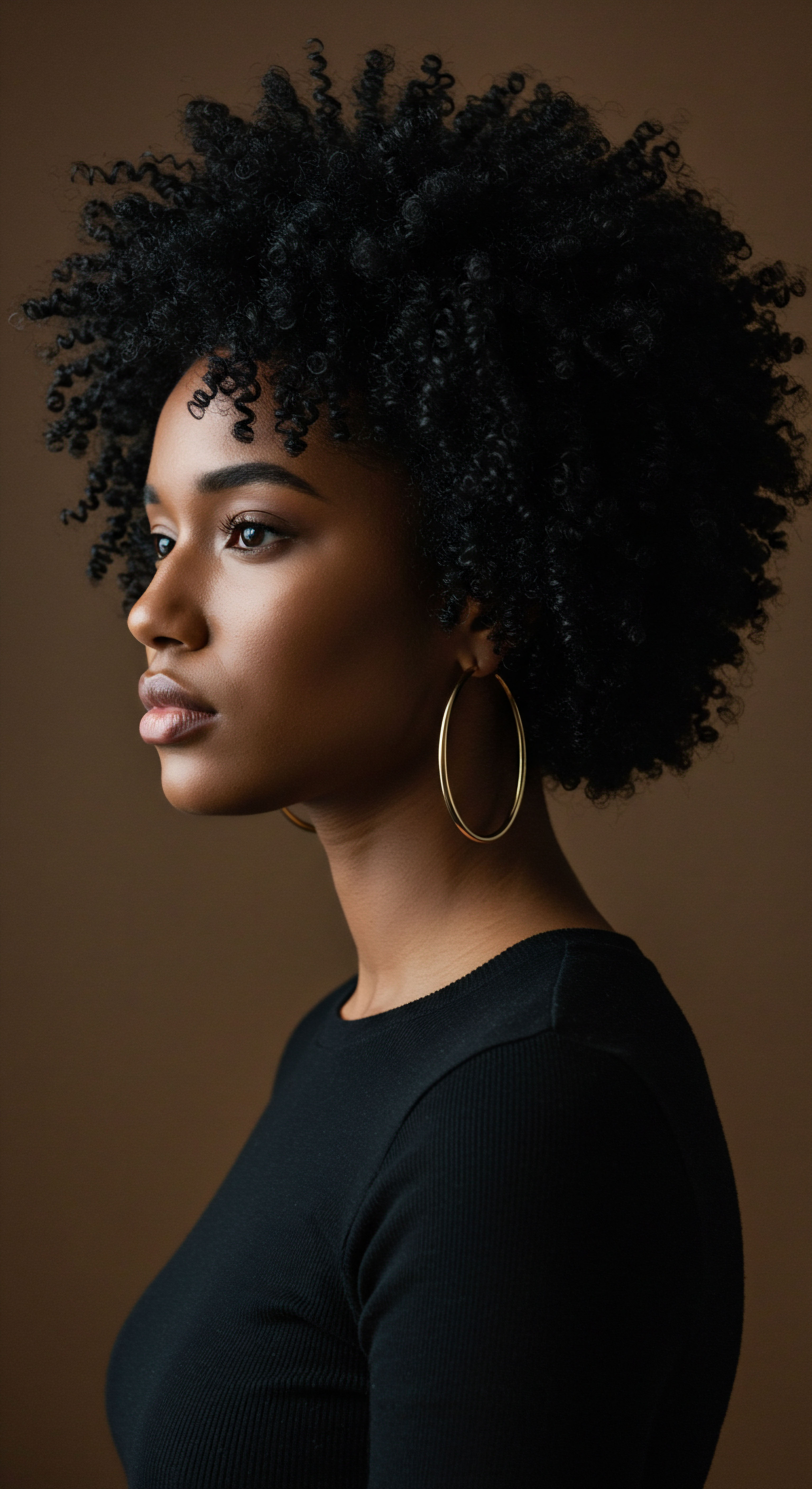
Ritual
Stepping beyond the quiet contemplation of hair’s fundamental building blocks, we arrive at the rhythm of daily life, the mindful practices that shape our hair’s experience. How do we, in our modern routines, honor the delicate architecture of the cuticle? This section invites us into the practical wisdom of care, where understanding the cuticle’s role transforms routine into a purposeful ritual. It is in these moments of cleansing, conditioning, and styling that we actively support the cuticle’s tireless work, guiding our hair towards its healthiest expression.
The cuticle, while a formidable protective layer, faces constant challenges from environmental elements, styling practices, and chemical applications. These external forces can cause the cuticle scales to lift, crack, or even degrade, compromising the hair’s protective barrier. Recognizing these stressors and adapting our care practices accordingly is a cornerstone of hair wellness. This thoughtful approach allows us to maintain the integrity of the cuticle, preserving the hair’s strength and vitality.
Daily practices and mindful product choices play a significant role in maintaining cuticle integrity and hair health.
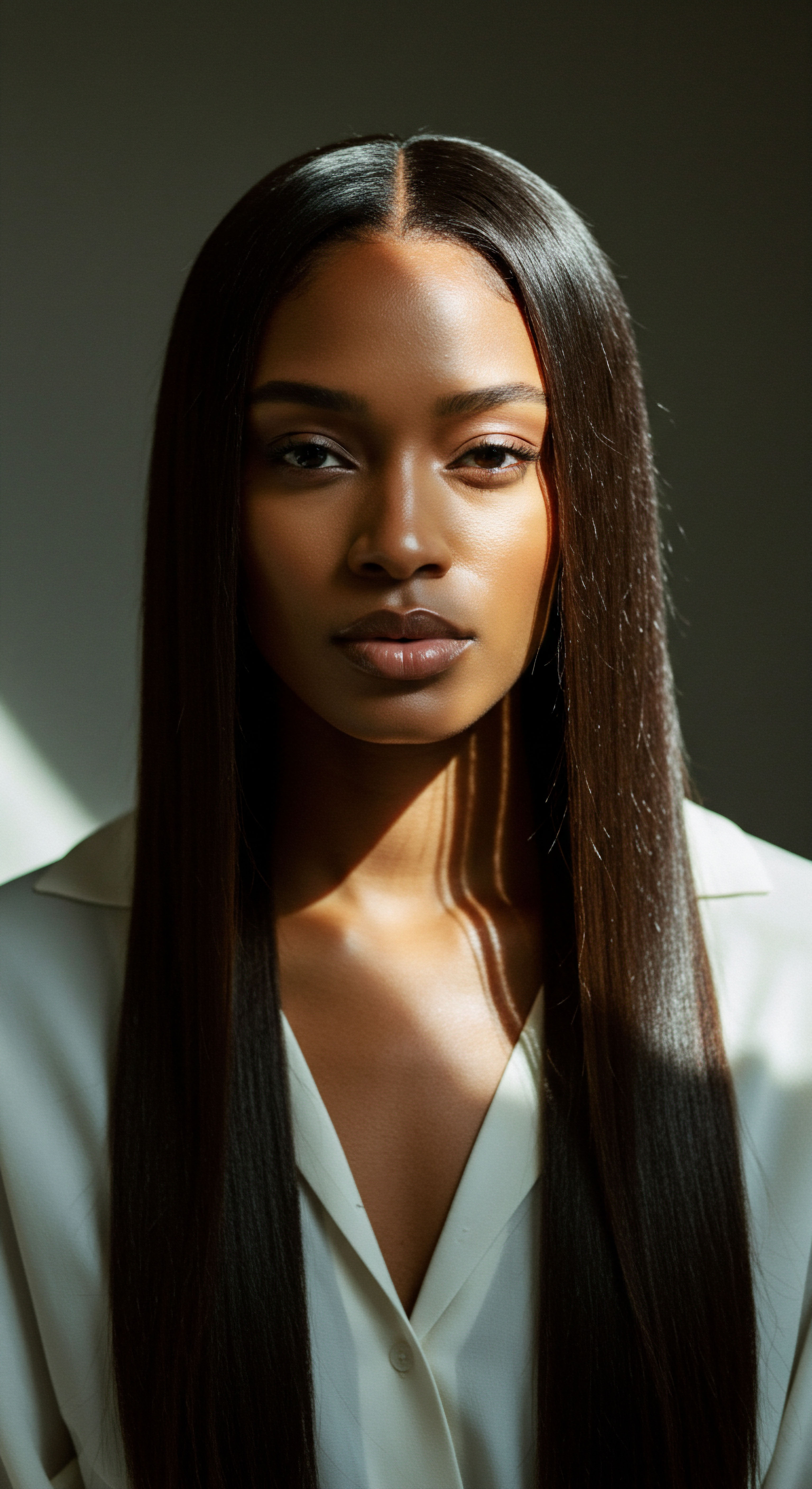
How Does Hair Porosity Relate to Cuticle Condition?
One of the most significant practical implications of cuticle condition is its direct relationship with hair porosity. Hair Porosity refers to the hair’s ability to absorb and retain moisture. This characteristic is determined by how tightly or loosely the cuticle scales are arranged.
- Low Porosity Hair ❉ Here, the cuticle scales lie tightly packed and flat. This makes it challenging for moisture to penetrate the hair shaft, but once inside, moisture is well-retained. This hair type might resist water initially and take longer to air dry.
- Medium Porosity Hair ❉ With medium porosity, the cuticle scales are less tightly bound, allowing for a good balance of moisture absorption and retention. This hair type often appears healthy and holds styles well.
- High Porosity Hair ❉ In this instance, the cuticle scales are widely spaced or lifted, making it easy for moisture to enter the hair, but also for it to escape just as quickly. This can lead to dryness, frizz, and increased susceptibility to breakage. Textured hair, particularly curly and coily patterns, often exhibits higher porosity due to the natural looser arrangement of its cuticle scales.
For those with textured hair, understanding porosity is a game-changer. For example, a study highlighted that curly and coily hair often has higher porosity due to the looser arrangement of its cuticle scales, which allows for superior moisture absorption but also a struggle to retain it, leading to frizz, especially in humid environments. This scientific observation directly informs product selection and application techniques. For high porosity hair, products that help to seal the cuticle and lock in moisture become essential allies.
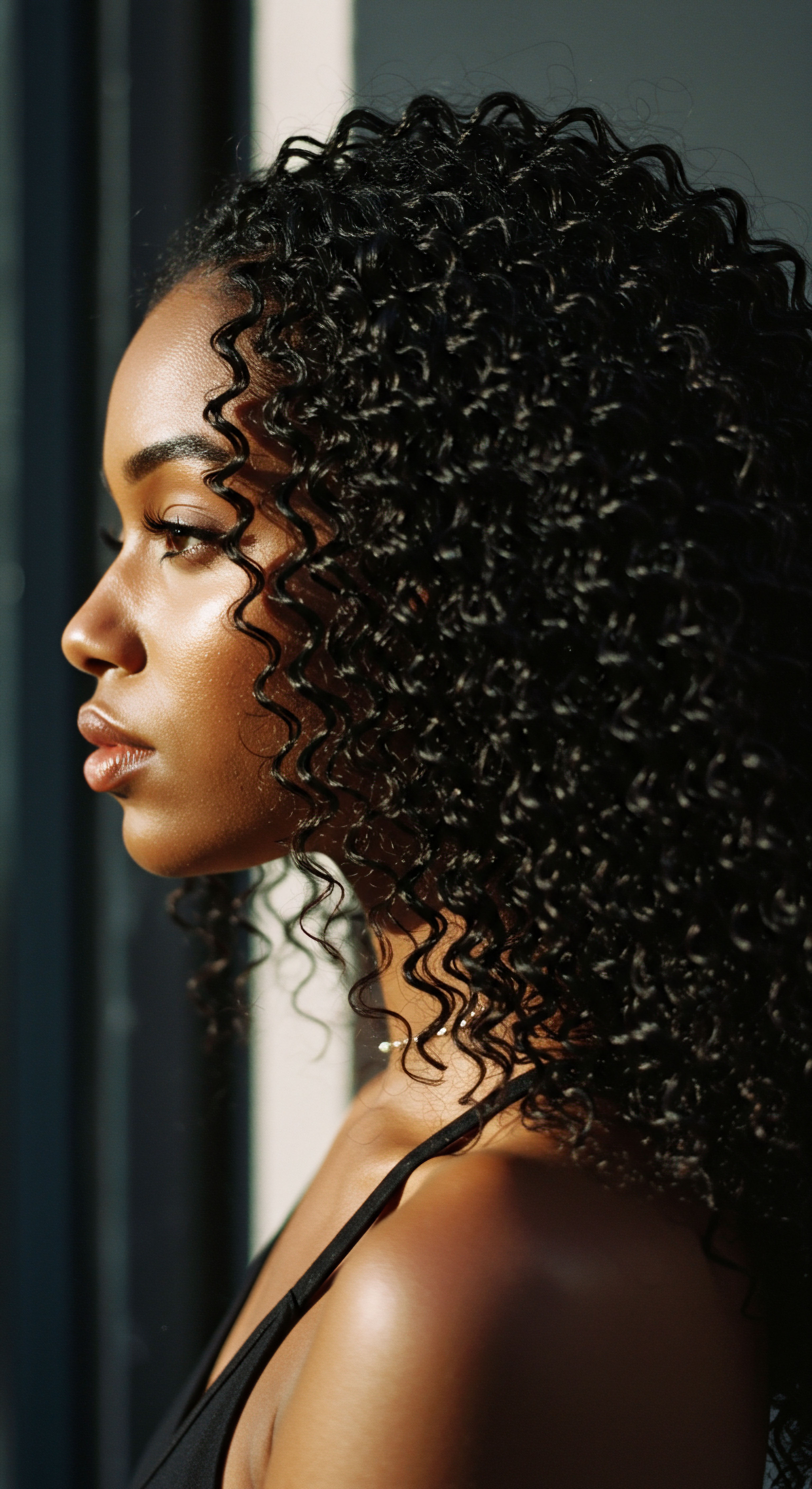
Safeguarding the Cuticle Through Mindful Care
The way we interact with our hair on a daily basis has a profound impact on cuticle health. Simple adjustments to our cleansing, conditioning, and styling rituals can significantly protect this outer layer.
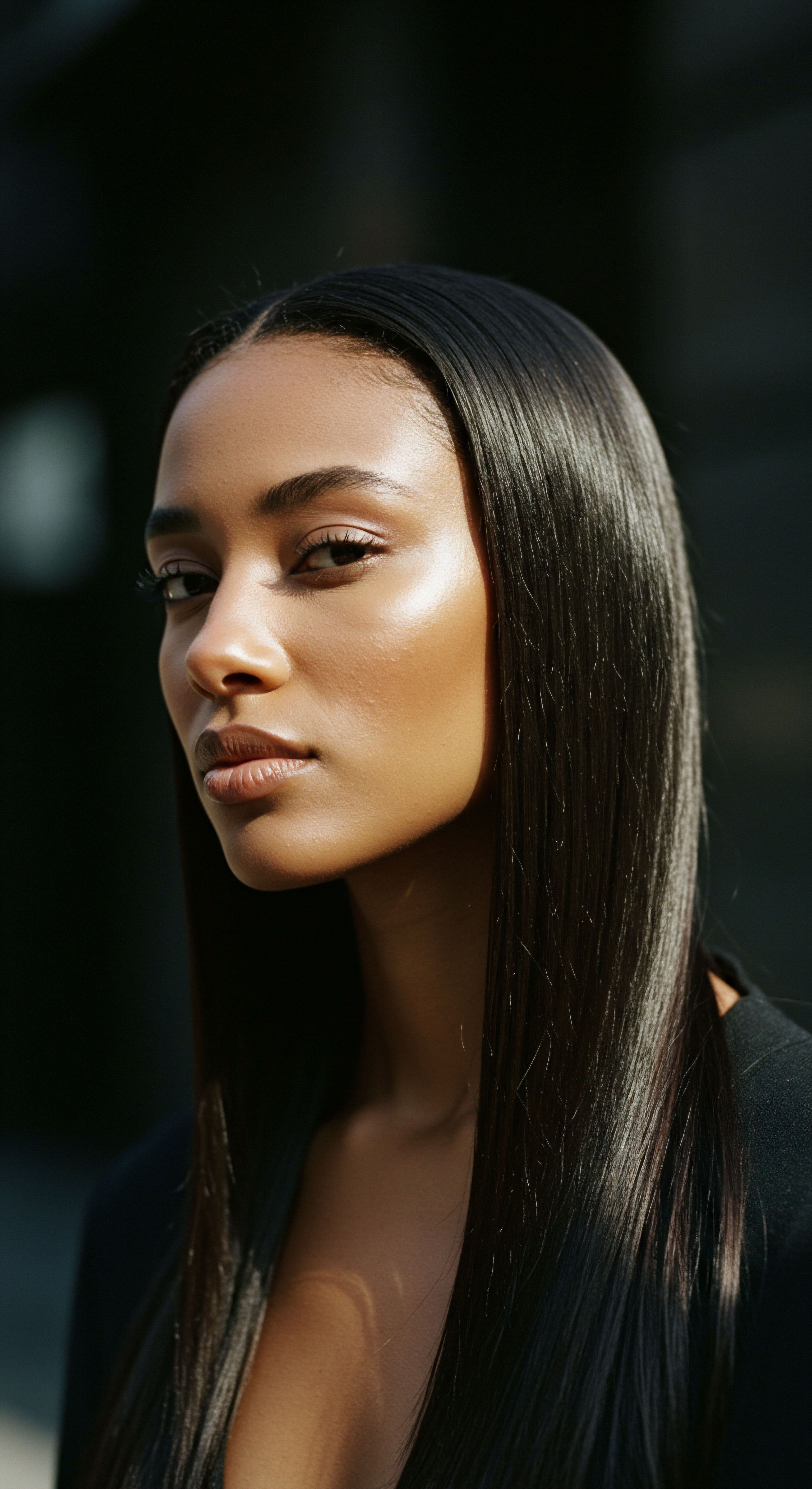
Cleansing and Conditioning
Gentle cleansing is paramount. Harsh shampoos, particularly those with strong sulfates, can strip the hair’s natural oils and cause the cuticle scales to lift, leaving the hair feeling rough and vulnerable. Opting for mild, sulfate-free shampoos helps to preserve the cuticle’s natural oils and maintain its integrity.
Conditioning treatments are equally vital. Conditioners and hair masks function as a balm, replenishing moisture and smoothing the cuticle scales. Leave-in conditioners provide ongoing protection throughout the day, creating a barrier that shields the cuticle from environmental stressors. For textured hair, which often craves moisture, deep conditioning masks rich in natural oils like argan, coconut, and jojoba can penetrate the cuticle, restoring hydration and contributing to a glossy, soft feel.

Styling and Protection
Heat styling, while offering styling versatility, can be a significant culprit of cuticle damage. Excessive heat from tools such as flat irons, curling irons, and blow dryers causes the cuticle to rise and can even vaporize water inside the hair fiber, leading to internal damage and a brittle texture. The application of a heat protectant spray creates a necessary barrier between the heat source and the hair, minimizing the adverse effects on the cuticle.
Beyond heat, mechanical stress from rough towel drying or aggressive brushing of wet hair can also lift and damage the cuticle. Wet hair is more fragile, and gentle detangling techniques are crucial. Sleeping on cotton pillowcases can also create friction, contributing to cuticle wear. Using silk or satin bonnets and pillowcases reduces this friction, allowing the cuticle to remain smoother.
Chemical treatments, including coloring, perming, and relaxing, are known to significantly alter hair structure, often by intentionally opening the cuticle to allow chemicals to access the cortex. While these treatments offer aesthetic changes, they can leave the cuticle compromised, leading to increased porosity, dryness, and breakage. Following chemical services with intensive moisturizing and protein treatments can help to restore some of the cuticle’s integrity.
| Practice Cleansing |
| Impact on Cuticle Harsh shampoos lift scales, strip oils. |
| Recommended Approach Use mild, sulfate-free shampoos. |
| Practice Conditioning |
| Impact on Cuticle Replenishes moisture, smooths scales. |
| Recommended Approach Regular deep conditioners, leave-in products. |
| Practice Heat Styling |
| Impact on Cuticle Lifts scales, causes brittleness. |
| Recommended Approach Always use heat protectants, limit frequency. |
| Practice Wet Hair Brushing |
| Impact on Cuticle Increases fragility, causes damage. |
| Recommended Approach Detangle gently, use wide-tooth combs. |
| Practice Chemical Treatments |
| Impact on Cuticle Opens, compromises, or degrades cuticle. |
| Recommended Approach Follow with intensive moisturizing and protein care. |
| Practice Thoughtful daily care helps preserve the cuticle’s protective function and overall hair health. |

Relay
As we trace the path from foundational understanding to daily practice, a deeper appreciation for the hair cuticle emerges, one that stretches beyond mere biology into the realms of cultural significance and scientific complexity. What hidden messages does the cuticle convey about our hair’s resilience, its story across generations, and its interaction with the world? This section invites us to consider the cuticle not just as a physical shield, but as a silent witness to history, a canvas for expression, and a dynamic participant in the hair’s ongoing dialogue with its environment. Here, science and heritage converge, offering a profound understanding of this often-understated layer.
The cuticle, composed of dead keratinized cells, acts as a sophisticated protective barrier for the living cortex within. Its integrity is paramount for preventing protein loss and maintaining the hair’s mechanical properties. When this outer layer is compromised, the inner cortex becomes exposed, leading to increased susceptibility to breakage and dullness. This protective function is not static; it is constantly engaged in a complex interplay with external forces and internal biological processes.
The cuticle acts as a dynamic shield, its condition reflecting the hair’s historical interactions and predicting its future resilience.

How Do Environmental Stressors Impact Cuticle Integrity in Textured Hair?
Environmental factors, such as UV radiation, pollution, and humidity, exert significant stress on the hair cuticle. For textured hair, the unique helical structure can present a larger surface area, potentially increasing exposure to these elements. UV radiation, for instance, can degrade the protein structure of hair, leading to damage of the cuticle.
A study comparing the effects of various treatments on different hair types, including Afro-ethnic hair, revealed that bleaching, dyeing, and UVA/Vis radiation significantly increased the combing work required for Afro-ethnic hair tresses. This indicated substantial damage to the cuticle scales, a finding confirmed by Scanning Electron Microscopy (SEM) images. This research underscores that environmental and chemical aggressors do not affect all hair types uniformly; the structural nuances of textured hair can sometimes render its cuticle more susceptible to certain forms of external wear. The study also noted that bleaching and dyeing caused significant protein loss and a reduction in tryptophan content, regardless of curliness, highlighting the aggressive nature of these procedures on hair structure.
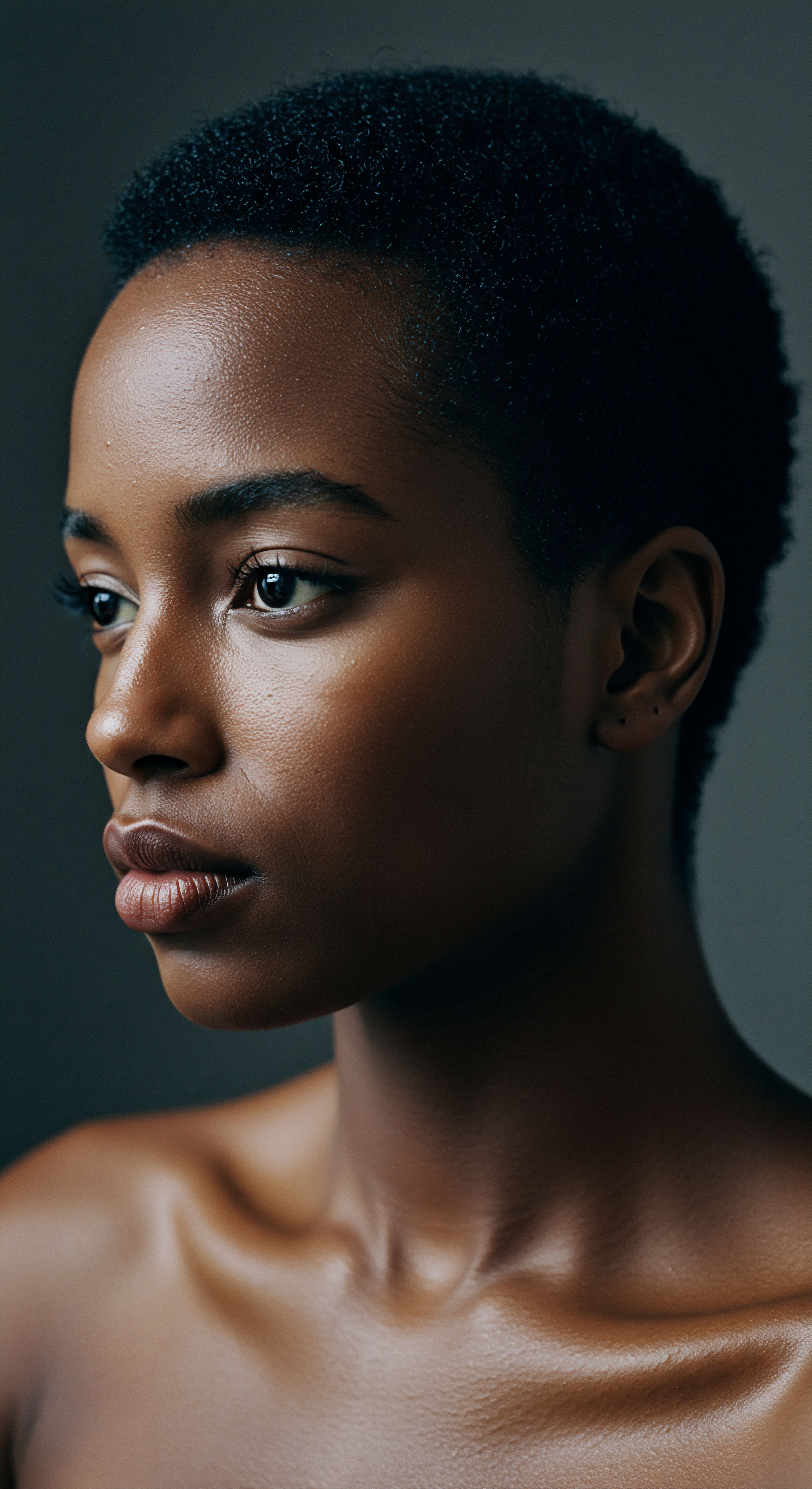
The Cuticle’s Role in Moisture Dynamics and Porosity
The cuticle’s overlapping cell structure is crucial for regulating the hair’s moisture content. A healthy, closed cuticle acts as an efficient barrier, preventing excessive water absorption and loss. However, when the cuticle is lifted or damaged, hair becomes highly porous, meaning it readily absorbs water from humid environments but struggles to retain it, leading to dehydration and frizz. This dynamic is particularly relevant for textured hair, which naturally tends to be drier due to its curl pattern making it harder for scalp oils to travel down the hair shaft.
The lipid layer on the hair surface, primarily composed of 18-MEA, contributes to the hair’s hydrophobic nature, which is its ability to repel water. Damage to this layer, often caused by harsh chemicals or excessive heat, compromises the cuticle’s ability to manage moisture, leading to increased porosity and a feeling of dryness. This loss of natural protective lipids leaves the hair more vulnerable to environmental humidity, which can cause the cuticle scales to swell and lift, resulting in frizz.
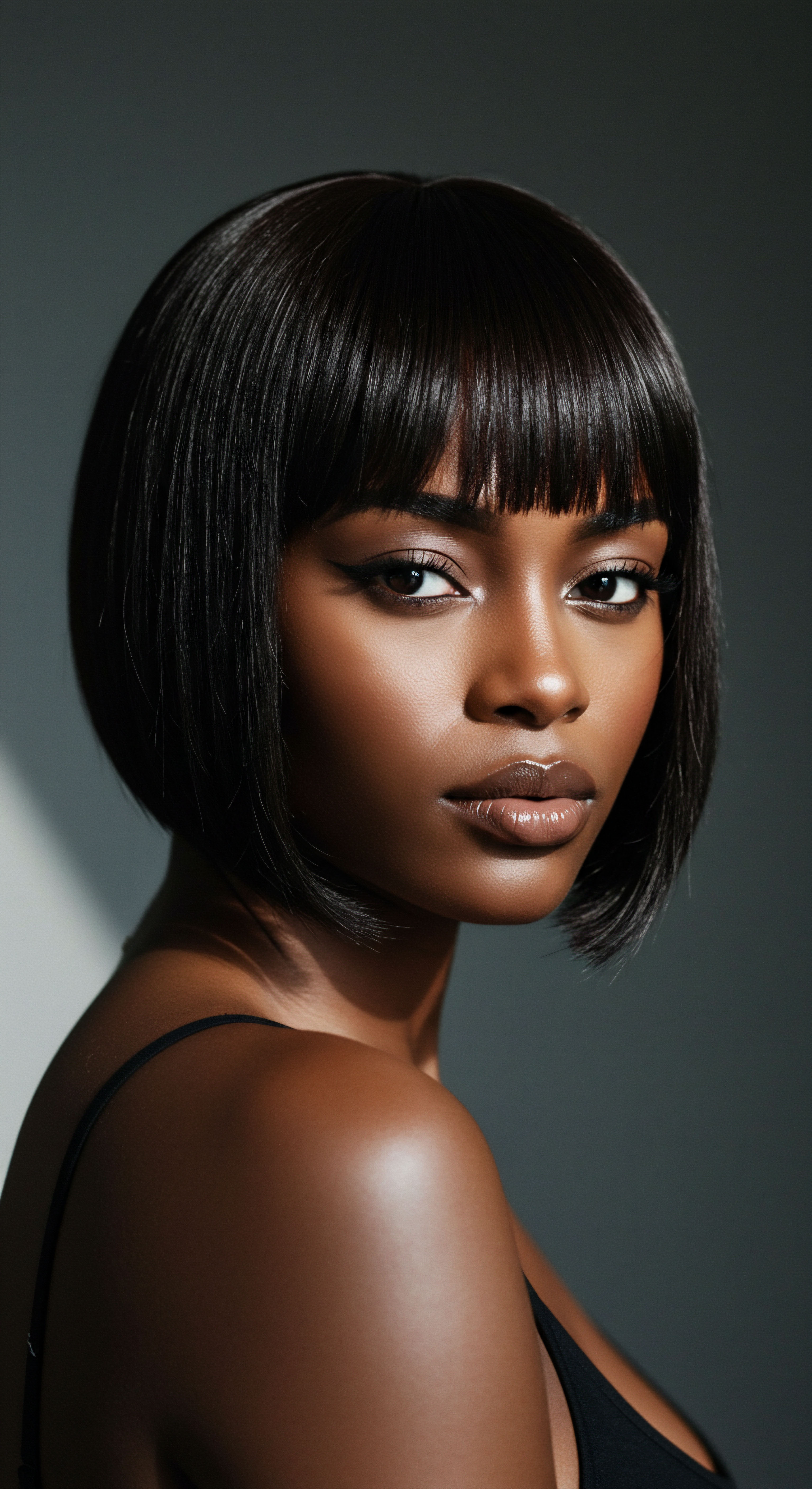
What Does the Cuticle Reveal About Hair’s Historical and Cultural Journey?
While the cuticle is a biological structure, its condition and the practices surrounding its care hold a subtle yet significant place in the broader cultural narrative of hair. Across various communities, hair has long been a symbol of identity, status, and heritage. The ways in which different cultures have sought to protect, alter, or adorn their hair directly speak to an intuitive, if not always scientifically articulated, understanding of the cuticle’s importance.
Ancient Egyptian practices, for example, involved the use of natural oils and plant-based extracts to nourish and protect hair, achieving remarkable shine and health. This historical attention to hair’s outer appearance implicitly acknowledged the cuticle’s role in luster and protection. Similarly, Ayurvedic hair care, a traditional Indian medicine system, emphasizes holistic hair care, including herbal treatments and natural oils that protect the cuticle layer. These ancient rituals, passed down through generations, aimed to maintain hair’s strength and vibrancy, directly influencing the cuticle’s well-being, even if the microscopic science was yet to be discovered.
The act of braiding in many African societies, a practice with deep cultural meaning, serves not only as a form of artistic expression but also as a protective styling method. By reducing manipulation and exposure to external elements, braiding helps to preserve the cuticle’s integrity, minimizing damage and moisture loss. This intertwining of cultural practice and hair health highlights a long-standing, lived understanding of the cuticle’s fundamental role in preserving the hair’s condition, especially for textured hair which benefits greatly from protective styles.
| Cultural Tradition Ancient Egypt |
| Practice Natural oils and plant extracts. |
| Cuticle Benefit Nourishes and protects cuticle, enhances shine. |
| Cultural Tradition Ayurvedic Care |
| Practice Herbal treatments and natural oils. |
| Cuticle Benefit Shields cuticle layer, supports overall health. |
| Cultural Tradition African Braiding |
| Practice Protective styling, reduced manipulation. |
| Cuticle Benefit Preserves cuticle integrity, minimizes damage. |
| Cultural Tradition Historical and cultural practices often intuitively supported cuticle health for vibrant hair. |
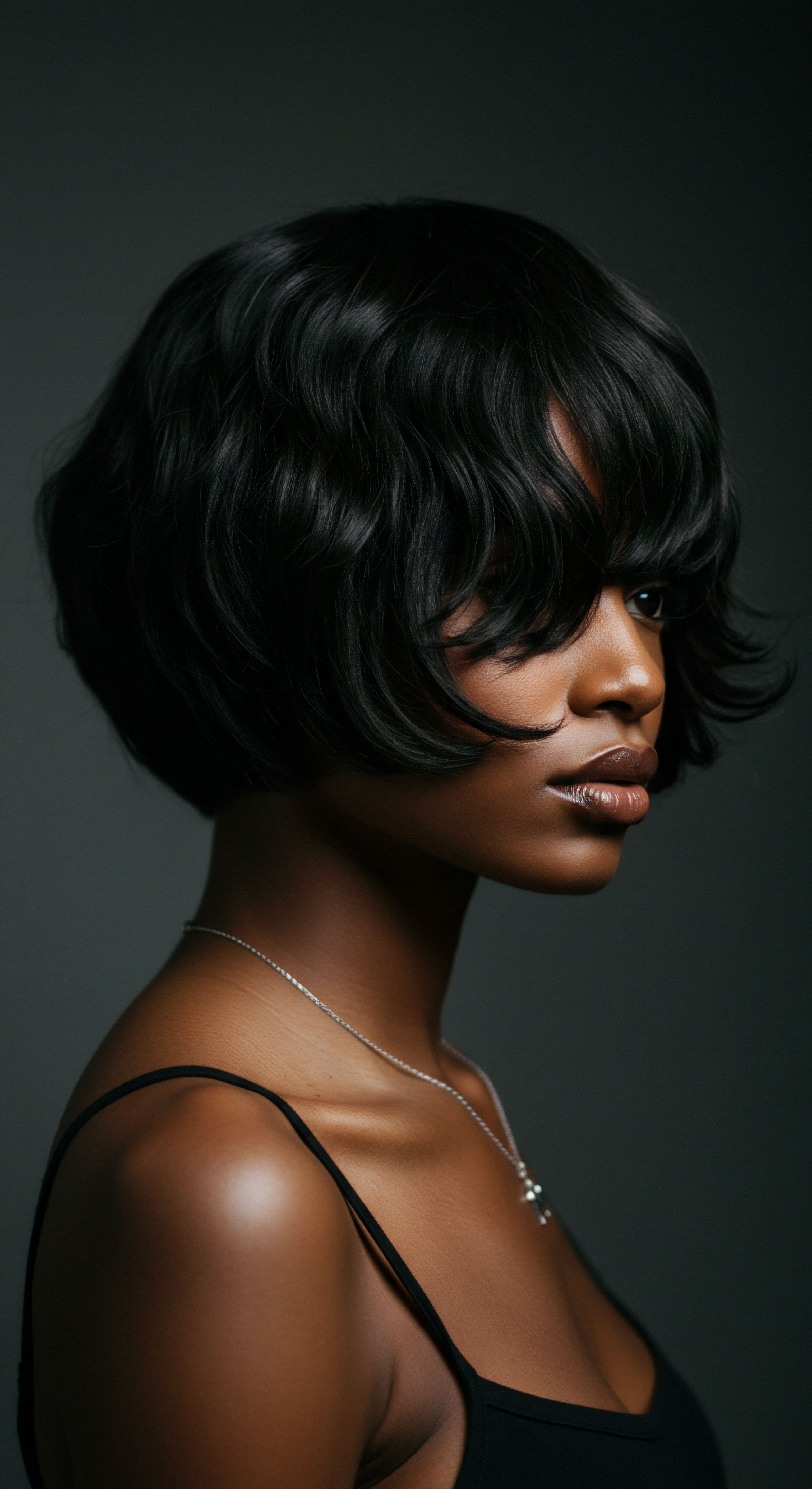
The Cuticle as a Marker of Hair Health and Resilience
The condition of the hair cuticle serves as a reliable indicator of overall hair health. When the cuticle is healthy, hair exhibits good elasticity, minimal shedding, and responds well to moisture. Conversely, damaged cuticles are associated with increased breakage, split ends, and a dull, rough texture.
Scientific studies confirm this direct relationship. A review published in the International Journal of Cosmetic Science in November 2021 confirmed that rapid cuticle degradation significantly increases hair’s vulnerability to mechanical insults. This means that when the cuticle is weakened, hair is more prone to damage from everyday actions like brushing, styling, or even friction against surfaces. The quality of the hair is also compromised in such cases.
The mechanisms of chemical treatments, such as bleaching and permanent hair dyes, specifically target the cuticle. These processes necessitate the opening of the cuticle layers to allow chemicals to penetrate the cortex. While achieving desired aesthetic changes, this action can leave the cuticle porous and less effective as a protective barrier.
The consequence can be increased moisture loss and protein depletion, leading to hair that is more brittle and susceptible to damage. This deeper understanding of the cuticle’s response to various interventions underscores its central position in hair’s structural integrity and long-term vitality.

Reflection
Our exploration of the hair cuticle, from its intricate cellular architecture to its profound cultural echoes, reveals a layer far more significant than its microscopic size might suggest. It stands as a testament to the quiet strength and enduring beauty of hair, a constant reminder that true radiance springs from deep care and a grounded understanding. Each overlapping scale, a silent sentinel, speaks to a history of resilience and a promise of continued vitality when honored with thoughtful attention. As we move through our days, touching our hair, styling our coils, or simply admiring its flow, we can carry this gentle wisdom with us, knowing that beneath the surface, a delicate dance of protection and preservation is always unfolding.

References
- Bolduan, F. (2014). Hair ❉ A Biomedical Perspective. Springer.
- Robbins, C. R. (2012). Chemical and Physical Behavior of Human Hair. Springer.
- Rogers, G. E. (1959). Electron Microscopy of the Human Hair Follicle. II. The Hair Cuticle. Journal of Biophysical and Biochemical Cytology, 3(2), 215–222.
- Swift, J. A. & Smith, J. R. (2001). The Role of 18-Methyleicosanoic Acid in the Structure and Formation of Mammalian Hair Fibres. Micron, 32(3), 321-326.
- Robbins, C. R. (2012). Practical Hair Science. Allured Publishing Corporation.
- Feughelman, M. (1997). Mechanical Properties of Keratin Fibers. Springer.
- Yamauchi, H. & Katoh, T. (2000). The Hair Cuticle. Journal of Cosmetic Science, 51(3), 159-170.
- Gamlen, M. J. (2010). The Structure and Properties of Hair. Royal Society of Chemistry.
- Marsh, J. M. & Johnson, W. E. (Eds.). (2008). Cosmetic Science and Technology ❉ Theoretical and Applied Approaches to Modern Industry. CRC Press.
- Hassan, S. et al. (2024). Investigation of the Changes in the Hair Cuticle Due to Chemical Degradation. Uttar Pradesh Journal of Zoology, 45(2), 86-94.
- Dias, M. F. R. G. (2015). Hair Cosmetics ❉ An Overview. International Journal of Trichology, 7(1), 2-15.
- Bhushan, B. (Ed.). (2010). Biophysics of the Hair Fiber. Springer.
- Lee, Y. et al. (2019). Known and Unknown Features of Hair Cuticle Structure ❉ A Brief Review. Cosmetics, 6(2), 32.
- Hottinga, A. & de Groot, J. (2000). Hair Damage. Journal of the Society of Cosmetic Chemists, 51(6), 391-402.
- Sleeman, M. (1981). Medieval Hair Tokens. Forum for Modern Language Studies, 17(4), 322-332.